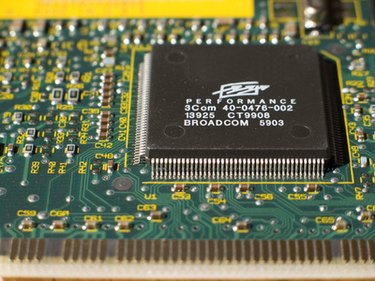
In layman's terms, physical memory (random access memory or, simply, RAM) is the section of your computer's brain—others include the hard drive and optical drivers, such as the CD or DVD drive—where information can be stored and accessed quickly (and at random) to ensure efficient operation. If you find that your computer is running slowly, chances are some issue involving its RAM is at fault. It's therefore a good idea to try some simple remedies that will strike your problem at its root before you rush out to have any unnecessary repairs done—this should be your last resort.
Step 1
Defragment your hard drive. In Windows, open the "Start" menu and navigate to "Accessories." Scroll down to "System Tools" and click "Disk Defragmenter." Select your hard drive from the list (if Windows has not automatically done so), then click "Defragment" to begin the process. Defragmenting removes the incomplete and corrupt files that tend to scatter around your hard drive as your computer ages. According to Apple, its latest operating systems optimize performance automatically with each update, thereby eliminating the need to defragment Macs.
Video of the Day
Step 2
Uninstall any applications you don't regularly use. In Windows, open the "Start" menu and click the "Control Panel" button. Click "Add or Remove Programs" and follow the instructions. On a Mac, drag your unwanted programs directly into the trash. Every program you have on your hard drive can also affect the amount of RAM available for use, especially if that program starts itself automatically without your knowledge.
Step 3
Limit the amount of applications you have running at any one time. By its very definition, RAM is used to store and provide information for programs as they run. The fewer programs you have open, the less RAM will be used. It's also a good idea to minimize windows that are not in use.
Step 4
Install spyware protection if you have not already done so (see Resources). Spyware programs are invisible, miniature programs and applications that can use your system's resources without you even knowing. Run a scan at least once daily to remove spyware as soon as possible after it installs itself.
Step 5
Contact a computer repair specialist if you don't notice any improvement in the function of your machine. Depending on its age, your computer simply might not be equipped with the standard amount of function imposed by today's programs. In most cases, he will install more RAM onto your computer at a relatively low cost.
Video of the Day